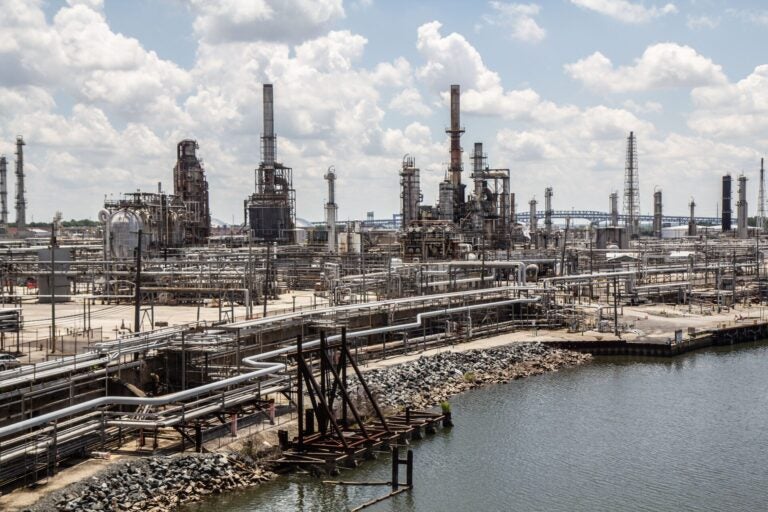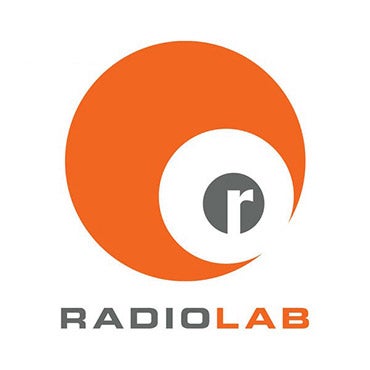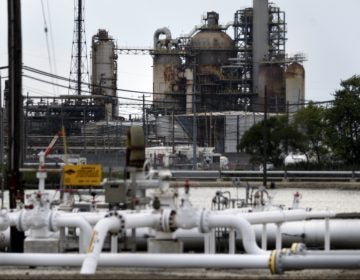Cancer-causing benzene will not be monitored at former PES refinery site in 2023
“One way of showing … that you care about the community is to keep monitoring to see if we're safe,” a nearby resident said.

File photo: The former PES refinery site in South Philadelphia on June 2020. (Kimberly Paynter/WHYY)
The company redeveloping the former Philadelphia Energy Solutions refinery site in South Philadelphia plans to stop monitoring for benzene at the end of this year.
The cancer-causing chemical has been found at high levels at the property line even after the refinery shut down. Neighbors, advocates, and experts have called for the monitoring to continue.
“One way of showing good faith and that you care about the community is to keep monitoring to see if we’re safe,” said Shawmar Pitts, a managing director of the activist group Philly Thrive who has lived near the refinery all his life.
Benzene is found in things like car exhaust, tobacco smoke, and crude oil, which was processed at the PES refinery before it shut down following an explosion and fire in 2019.
The massive site is contaminated from more than a century of industrial use, and remediation has been going on for years. The refinery itself is now at least 88% demolished.
Hilco Redevelopment Partners (HRP), which bought the 1,000-acre former refinery in 2020 and plans to turn it into a logistics and life sciences hub branded the Bellwether District, continued to monitor for benzene at roughly 30 points along the property’s perimeter in line with the EPA’s Petroleum Refinery Sector Rule, posting results online. But because refinery operations stopped at the site in September 2021, according to HRP, and the site was officially reclassified through an updated operating permit issued this fall, HRP plans to stop monitoring at the end of 2022.
Average concentrations of benzene at the former refinery’s fenceline have fallen each year since 2019 to a fraction of what they were the year of the fire, according to HRP.
“Now that much of the decommissioning work has been completed and the demolition work is proceeding, we’re seeing those concentrations come down even lower,” said Julianna Connolly, HRP’s executive vice president for environmental remediation, at a public meeting in November.
But as recently as March 2022 — the most recent period the EPA published data for — the former PES refinery exceeded the EPA’s action level of 9 µg/m3 for a rolling annual measure the agency uses to approximate benzene emissions coming from refineries themselves rather than background levels in surrounding communities, by subtracting the lowest fenceline concentrations from the highest and averaging that difference over a year.
In May, an environmental watchdog nonprofit listed the shuttered PES site as one of the biggest polluters of benzene among refineries nationwide based on 2021 data.
“It’s hard for me to imagine how they justify no longer collecting the data that could show them when and whether they actually consistently get down to within safe levels,” said Gwen Ottinger, a professor in Drexel’s Department of Politics who recently led the creation of a website to make refinery benzene data accessible to members of the public and researchers. “Currently, they’re still getting some very high readings.”
An HRP spokesperson said current concentrations at the site are “consistent with concentrations typically detected in urban areas.”
Since the spring, average site-wide benzene levels have been close to, but still above ambient levels of benzene measured at four locations in Philadelphia by the city’s public health department, which each averaged below .7 µg/m3 in 2021. Between March and November 2022, benzene levels at the former refinery fenceline averaged around 1 µg/m3, but several individual fenceline monitors at the former refinery site detected spikes.
In October, a monitor on the southwestern edge of the site along the Schuylkill River picked up a benzene concentration of 11 µg/m3. The next month, a nearby monitor measured a concentration of more than 7 µg/m3.
“Prior to that, the numbers were below the EPA levels for some time, and then in October there was just a spike out of nowhere,” said Pitts, of Philly Thrive. “So it would be good if we could keep studying and keep monitoring to see what the tendencies are.”
Pitts said continued air quality monitoring as HRP redevelops the former refinery site should be a term of the community benefits agreement the company committed to negotiating with nearby community groups starting in 2023.
Asked what could be behind the spikes in benzene readings at the site’s perimeter, an HRP official told PlanPhilly in May they could be caused by external or mobile pollution sources, such as idling trucks.
“The benzene data do not indicate sustained elevated concentrations at the perimeter of the property during decommissioning and demolition activities, which began in mid-2020,” HRP’s Connolly said at the time.
New monitoring efforts could help fill the gap
Philadelphians will likely lose the biweekly data on benzene levels at the former PES refinery site’s fenceline, but several new sources of information could come online in 2023.
Researchers at Drexel University are partnering with Philly Thrive to set up a network of air monitors near the former refinery site that could start operating as soon as January.
The monitors will measure benzene, as well as pollutants like fine particulate matter and lead, said Sheila Tripathy, a senior research scientist at Drexel’s Dornsife School of Public Health working on the project.
Researchers plan to place the monitors at locations of “community concern,” Tripathy said, and are working with members of Thrive to determine where these will be.
“We’re focusing on Grays Ferry and Wilson Park, but we will also have sites upwind of the refinery and along Passyunk Avenue and other locations so that hopefully we can develop a clear understanding of what pollutant levels are at varying distances from the Hilco site, and then also in areas with high and low traffic,” Tripathy said.
Thrive members will also help determine how members of the public can access the data. The project aims to provide information on pollutant levels inside communities near the former refinery — something residents have called for during public meetings.
The project will not be a replacement for the fenceline monitoring HRP has done at the former refinery site, Tripathy said. It was planned before the company announced they would stop.
“Ideally having continued access to fenceline benzene data would allow us to compare concentrations both on the site and off the site,” Tripathy said.
The city also collects some data about benzene. Four of the 10 the stationary air quality monitors the city operates for the EPA measure the chemical. The one nearest the former refinery site is located at 24th Street and Ritner Street in South Philly.
New data will also be available in April from a different monitoring project nearby. Air Management Services (AMS) within the city’s Department of Public Health launched a “community-scale” monitoring project in March 2022 to measure the top seven air toxics in Philly, including benzene, in areas near the former refinery site, including South Philly, Eastwick, and Center City.
AMS is also working on deploying, purchasing or planning real-time monitors to measure benzene, among other pollutants, through various projects, including a mobile monitoring van that can be used in air quality emergencies or in ongoing areas of concern. It will launch for the first time in January, collecting data at four locations including one near the former refinery, said James Kyle, a spokesperson for AMS.

Subscribe to PlanPhilly
WHYY is your source for fact-based, in-depth journalism and information. As a nonprofit organization, we rely on financial support from readers like you. Please give today.









